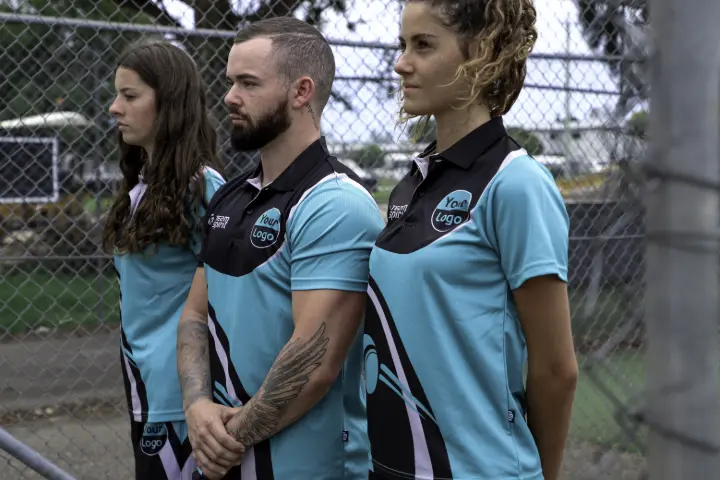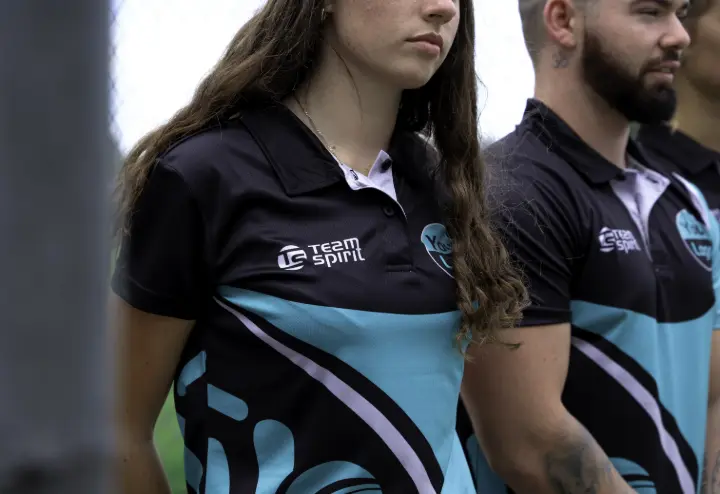Cricket isn’t just a game, it’s a culture, a tradition, and for many Australians, a lifelong passion. While most fans focus on runs, wickets, and rivalries, the cricket uniform history offers a fascinating window into how the sport has evolved.
From the crisp, white outfits worn by early players to today’s vibrant coloured kits seen in limited-overs matches, cricket attire has changed dramatically over the centuries. These changes haven’t just been about fashion. They reflect shifting playing conditions, innovations in fabric technology, and broader cultural trends in sport and society.
Understanding the history of cricket uniforms gives us insight into the traditions that continue to shape the modern game, and highlights just how far cricket has come, especially in countries like Australia, where the sport has deep roots.
Cricket Uniform History: Early Days of Cricket Attire
In cricket’s earliest days, players stepped onto the field wearing outfits that would be more at home at a gentleman’s club than a sporting ground.
We’re talking high-waisted wool trousers, long-sleeved cotton shirts, and often a waistcoat or tailored coat layered over the top. It wasn’t unusual to see players wearing neckties and cravats, even while bowling in the summer sun.

As for headwear, early cricketers favoured bowler hats, straw boaters, and later, the iconic cap, a style that’s still associated with cricket to this day. Footwear wasn’t exactly athletic either, with many players donning leather-soled shoes with minimal grip.
Back then, cricket wasn’t just a game, it was a statement of class and discipline. Uniforms were less about function and more about formality. But as the sport spread and professionalised, the gear had to evolve.
Australia Cricket Jersey History: Transition to Traditional Whites
By the late 18th and early 19th centuries, a shift was underway. Players began adopting white clothing, a move that would come to define the image of traditional cricket for over 200 years.
So, why white?
- Practicality: White reflected the heat and helped players stay cool during long matches under the sun.
- Visibility: On grass fields, white offered a clear contrast, making it easier to spot the ball.
- Symbolism: White clothing was associated with sportsmanship, purity, and a sense of fairness, values deeply embedded in the early culture of the game.
Soon, the all-white uniform became standard for Test cricket and other traditional formats. Players wore cricket whites, woollen jumpers, and later, floppy sun hats or the Baggy Green cap in Australia, a garment that would become a national icon.
This era cemented the idea of cricket as a refined, methodical sport. But change was coming.
Introduction of Coloured Uniforms
The idea of playing cricket in anything other than white was once unthinkable. That all changed with the rise of limited-overs cricket.
The 1970s saw the birth of One Day Internationals (ODIs), bringing with it the need for a more spectator-friendly approach. Day-night matches meant white balls, and white balls on white clothing didn’t work – both practically and visually. Enter the era of coloured uniforms.

But it was the 1992 Cricket World Cup that truly changed the game. For the first time, all teams sported bold, colourful jerseys. Australia’s kit, featuring a yellow base with green and white diagonal stripes, turned heads and sparked a fashion revolution in the sport.
Coloured cricket kits quickly became the norm in ODIs and later T20 formats, allowing teams to express their national identity through vibrant designs. Uniforms weren’t just functional anymore, they were also about flair, branding, and fan engagement.
Today, whether it's the Baggy Green tradition in Tests or the bright kits of T20 leagues, cricket uniforms reflect both the history and the future of the sport.
Evolution of Cricket Uniform Materials and Design
Cricket uniforms have undergone a massive transformation, not just in how they look, but how they’re made.
In the early days, players wore heavy wool garments. While these looked sharp, they weren’t exactly made for comfort, especially during long summer days. Wool retained heat and moisture, making it tough to stay cool and dry on the field.
By the 1980s and 90s, the industry moved towards synthetic fabrics like polyester blends. These materials were lighter, more breathable, and allowed for better moisture management, especially in formats like ODIs and T20s, where speed and agility were key.
Understanding this shift is essential to appreciating the broader cricket uniform history, where innovation has played just as big a role as tradition.
Designs also became more practical and performance-oriented:
- Collars shrank or disappeared to reduce restriction around the neck.
- Sleeve lengths shortened for mobility.
- Shirts became more fitted, improving aerodynamics and movement.
The introduction of team logos, sponsorships, and player numbers marked the start of cricket’s commercial era. Jerseys were no longer just uniforms – they became branding tools, storytelling canvases, and fan merchandise. This shift helped transform cricket into a globally marketable sport.
Cultural and Regional Influences on Cricket Uniforms
While the laws of cricket might be universal, the uniforms tell a more localised story.
In Australia, cricket uniforms often incorporate national colours (green and gold), and in recent years, there’s been a move to include Indigenous motifs – reflecting a deeper acknowledgement of the country’s First Nations culture.
In India, uniforms often feature saffron and blue, blending modern style with references to the country's national flag and cricketing heroes.
England’s kits retain a touch of classic British conservatism, even as they adopt contemporary cuts and tech-forward fabrics. Elsewhere, teams like the West Indies have long used bold maroons and iconic crests to celebrate their Caribbean identity.
These differences show how cricket uniforms are shaped by local pride, history, and culture. They’re not just what players wear, they’re what players represent.
Australia’s Uniform Evolution and Modern Cricket Innovations
Australia’s cricket uniform story is one of proud tradition and bold innovation. From the classic whites to cutting-edge fabrics, the evolution of Australia’s cricket kit reflects the broader transformation of the sport, both in how it’s played and how it’s perceived.
The Legacy of the Baggy Green
At the heart of Australia’s Test uniform is the iconic Baggy Green cap. First introduced in the late 1800s, this deep-green, soft-fabric cap has become a symbol of national pride, unity, and achievement. It’s not handed out lightly, only those selected to represent Australia in Test matches earn it. To this day, receiving a Baggy Green is considered one of the highest honours in Australian sport.
Paired with crisp whites, Australia’s traditional Test cricket uniform reflects the game’s heritage, with minimal design changes over the years to preserve its timeless look.
Australia’s Coloured Kits: Breaking the Mould
Australia was one of the early adopters of coloured uniforms in limited-overs cricket. The 1992 World Cup marked a turning point, with the team stepping out in a vibrant yellow jersey with bold green and white stripes, instantly recognisable and truly ahead of its time.
From there, the evolution continued:
- 1990s to 2000s: Addition of darker greens, gradient fades, and strong visual motifs.
- T20 Era: High-energy designs, sharper cuts, and more dynamic patterns reflect the fast-paced, entertainment-driven nature of the format.
These design updates weren’t just for show, they also aligned with fans' growing desire for team identity, modern aesthetics, and personal expression.
Performance Meets Style: The Modern Cricket Kit
Cricket today demands more from its athletes, and that includes what they wear. The modern cricket uniform isn’t just about colours and logos; it’s built for performance and comfort.

Most elite kits now feature:
- Moisture-wicking fabrics that help players stay cool and dry.
- Lightweight, breathable materials that regulate body temperature.
- Ergonomic cuts for better movement and flexibility on the field.
Australia’s recent ODI and T20 kits go even further, incorporating Indigenous art, reflective striping, and tailored fits. These designs highlight both cultural identity and national pride while meeting the demands of high-performance cricket.
The Future: Smart Uniforms and Full Customisation
Innovation hasn’t stopped. Cricket is now experimenting with:
- Smart fabrics that track player movements, hydration levels, and physical output, especially during training.
- Custom fit options for both pro and amateur teams, including:
- Personalised player names and numbers
- Multiple fit styles (slim, relaxed, athletic)
- Fully integrated team logos, national flags, or heritage motifs
At every level of the game from Test matches at the MCG to grassroots cricket in local clubs, uniforms are evolving to combine tradition, technology, and identity.
Australia’s journey is a perfect case study of how a cricket uniform can honour the past while embracing the future.
Customise Your Own Cricket Uniforms With Team Spirit Sports
Cricket uniforms have come a long way, from woollen whites and button-up shirts to lightweight, performance-ready gear tailored for the modern game. While the cricket uniform history is steeped in tradition, today’s teams are looking for style, comfort, and identity.
At Team Spirit Sports, we help you bring that identity to life.
Whether you’re a grassroots club or a competitive team, we offer custom cricket uniforms that combine heritage-inspired design with modern performance features. Choose your team colours, add your logo, personalise with names and numbers, and select from high-quality fabrics that suit Australian playing conditions.
- Design your own cricket jersey
- Flexible options for test, ODI, and T20 kits
- Fast turnaround times and Australia-wide delivery
From the classic whites to bold, contemporary styles, we’ve got you covered.
Start designing your custom cricket uniform now and be part of the evolution.